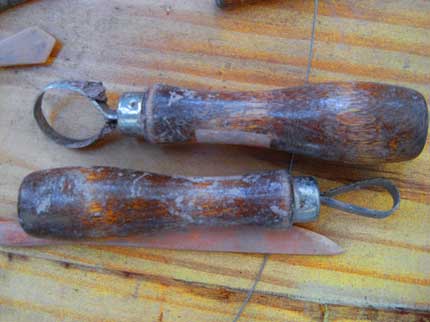Sculpture: A Three-Dimensional Art
The clay entices the hands to gather forms, appliqué and embroider them together, forms that approach nearer and nearer to motion and function, to feeling and pulse, to gaze and sound, as the hands shape, cut, wet, gouge, slice, add pieces, remove pieces, rake and smooth the gritty earth.

In the quiet of the studio and while the artist converses inwardly with the growing persona, the inner core of the character begins to emerge, to control the look of the eye, the set of the jaw, the wrinkle in the brow, and even the word the mouth might actually speak.
The clay-become-person persuades the hands to its own message until, at last, its eyes explain that it needs to stand on its own, apart from the artist, to let go the hands that worked it to the ready.
And so it stands... and the artist's hands let go, let it dry, fire it into stone that has life.
Then the stone is given to a mold-maker and metallurgist who make a mold of this stone and cast a wax image of it, frail and vulnerable. The waxy being is dipped into liquid ceramic which hardens around the wax. It is placed in a kiln to melt out the wax, leaving the hard shell ceramic. Into this shell is poured the molten bronze, white hot and flowing. Then, as if it were lava, it must sit until cooled thoroughly. "Thor" hammers it out of its ceramic chamber, sands and buffs it, pours acid on it to give it color, then waxes and buffs it. Once again, the eye glints, the lips catch the sun, the cheeks glow, and the possibility of imminent conversation appears.
It owns itself and offers now its own mind and heart.